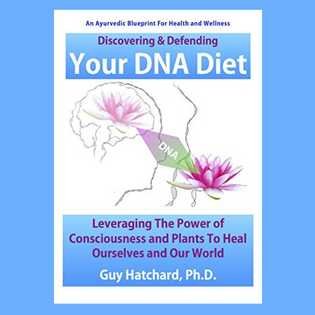You may have noticed a profusion of packaged goods which claim to be healthy because they are ‘low fat’. Weight loss products command a massive global market, the sector is worth $150 billion annually in the US alone. The entire global food market is worth $17 trillion. Securing a piece of this pie is a mouth watering prospect. Any advertising edge that producers can get through false healthy claims is readily adopted, no questions asked. So what does this mean for our stomach? Let’s take a look behind the glossy packaging and health claims.
For example, chocolates are now appearing from major brands on our supermarket shelves which contain so called ‘fat-reduced cocoa’ accompanied in some cases with claims they contain ‘lower calories’. When it comes to ‘fat reducing’ there is not a lot of information on the label. This is because there is no legal requirement to identify the source of many ingredients, simply to give them a name, specify a function and list them in order of quantity.
Among low fat alternatives offered in the US was the Gatsby 180 Calories per bar Chocolate Style Fudge Brownie, until that is people tasted it. A normal 80gm chocolate bar contains around 450 calories. Uber eats used to recommend the Gatsby which was described as a gluten-free, dairy-free, low-sugar, low-carb, and low-fat package of guilt-free indulgence which mimics the taste and texture of fudgy, chewy brownie batter. So what is not to like? Aside that is from the taste, and certainly the ingredients, all of which are widely used in New Zealand. These are listed in order of weight content in the Gatsby as follows:
Allulose, EPG modified plant based oil, Soluble Corn Fibre, Cocoa processed with Alkali, Palm Kernel Oil, Sugar, Sunflower Lecithin, and Natural Flavour
Actual chocolate content is fourth on the list, so what are the other ingredients for and how are they made?
1. Allulose
Official description: A rare low-calorie sugar that doesn’t raise blood sugar; It is US FDA GRAS-Approved safe (GRAS=Generally Recognised As Safe, a status which simply exempts a substance from going through any premarket food additive evaluation. In other words, its safety has been self-certified by industrial food manufacturers.)
Actual Origin: Allulose is produced using genetically engineered microorganisms capable of enzymatically converting fructose or sugar into something else that still tastes something like sugar but isn’t actually sugar, and btw highly likely now contains trace contamination by genetically engineered microorganisms such as Corynebacterium glutamicum strain FIS002 and E. coli strain K-12 W3110 (pWKLP) which contains multiple copies of D-psicose 3-epimerase. These along with other reactive catalytic processing and preservative agents including antibiotic genes, antibiotic resistant genes and cell proliferation agents.
New Zealand Use: Allulose is currently approved for use in New Zealand baked goods up to 10% by weight (!!!). It is also widely marketed as a healthy super food alternative sweetener by New Zealand health food companies. FSANZ is currently going through an approval process to allow general use in the food industry.
2. EPG modified plant based oil
Official description: Esterified Propoxylated Glycerol is a calorie reduced fat substitute which is not absorbed like regular fat. It has been safety tested and is FDA GRAS approved.
Actual Origin: The manufacturing process involves a patented technology that starts with splitting fats or oils (like rapeseed or canola oil) into glycerol and fatty acids. Glycerol is then reacted with propylene oxide. This process inserts propylene glycol units (PGUs) onto the glycerol’s hydroxyl groups, creating a modified glycerol molecule. The modified glycerol is then reacted with fatty acids. This process essentially re-links the fatty acids and glycerol, but with the PGUs in between, forming the EPG molecule. This results in a fat that’s resistant to digestion and reduces calories. In other words at the very least it has no nutritional value and is rejected by human bowel and digestive processes. Regulators consider it non-toxic although higher doses of EPG can cause some digestive issues like gas or oily stools.
New Zealand Use: EPG is used in various food applications, including confectionery, frying, baked goods, and snack foods although limited information is available about specific products. It is marketed as healthier and more sustainable than commonly used coconut and palm oils
3. Soluble Corn Fibre
Official description: A prebiotic fibre from corn which aids digestion and doesn’t spike blood sugar.
Actual Origin: Soluble corn fibre is a type of dietary fibre or maltodextrin made from cornstarch. It’s produced using enzymatic hydrolysis, a process that involves breaking the chemical bonds of a molecule using enzymes produced by genetically modified microorganisms. It is consequently subject to genetic contamination as described in (1) above. 92% of the corn processed in this way is also grown from genetically modified strains. In higher quantities it can cause digestive issues like gas or bloating.
New Zealand Use: It is widely used in New Zealand to thicken or sweeten processed foods like cereals, baked goods, dairy products, protein bars, and salad dressings. Because it absorbs water in the digestive tract it is also marketed as a healthy digestive aid and weight loss product.
4. Cocoa processed with Alkali
Official description: A Dutch process invented in the 19th century which reduced the natural acidity and bitter taste.
Actual Origin: The alkalising agents employed vary, but include potassium carbonate (E501), sodium carbonate (E500), and sodium hydroxide (E525). The process also reduces the beneficial natural phytochemical and antioxidant characteristics of chocolate.
New Zealand Use: Almost universal in chocolate goods
5. Palm Kernel Oil
Official description: A saturated fat from palm seed which is stable for cooking, safe in moderation and balanced with other oil sources. It is non-hydrogenated.
Actual Origin: It is pressed from palm kernels then refined using a four stage process of degumming, deacidification, decolourisation, and deodorization. Degumming involves the use of a genetically modified strain of aspergillus niger fungus to produce phospholipase enzymes. The other processes involve bleaching, treatment with alkalis and high temperature distillation. All of which degrade nutritional value as opposed to traditional cold pressing.
New Zealand Use: Widespread use in foods and cosmetics
6. Sugar
Although sugar can be made from genetically modified sugar beets, the refining process of extraction, clarification, and crystallisation is considered sufficient to break down any DNA or protein which btw also reduces its nutritional value. The health risks of high sugar intake are well known including weight gain and obesity, type 2 diabetes, heart disease, and tooth decay. Excessive sugar consumption can also contribute to non-alcoholic fatty liver disease, some cancers, and potentially worsen depression. These health risks are not limited to sugar, many so-called healthy sugar alternatives pose comparable or worse health risks.
7. Sunflower Lecithin
Official description: An emulsifier made from sunflower seeds. Emulsifiers help to mix ingredients smoothly. FDA and EFSA GRAS approved safe and well tolerated.
Actual Origin: Sunflower lecithin can be produced naturally by dehydrating sunflower seeds and separating them into oil, gum, and solids. The lecithin is extracted from the gum through a cold pressing process which avoids exposure to heat and oxygen. However an increasing amount of modern lecithin production now uses phospholipase enzymes, particularly phospholipase A1 and A2, which are produced using genetically modified microorganisms and therefore subject commercial lecithin to the same risks of GM contamination listed above in (1). A 2021 study published in the journal Microbiome entitled “Direct impact of commonly used dietary emulsifiers on human gut microbiota” raised questions about the effect of commercial emulsifiers increasing bowel inflammation. This was not found with any of the lecithin they tested, although the authors called for more research.
New Zealand Use: Many types of Lecithin are used widely in confectionery, chocolate, margarine, and baked goods. It is also sold as a health supplement along with dubious claims that it will improve brain and cardiovascular health, support the liver and aid breastfeeding mothers.
8. Natural Flavour
Official description: The term ‘natural flavour’ implies a flavour derived from natural sources like plants or animals.
Actual Origin: It is possible for ingredients labelled as ‘natural flavours’ to be derived from genetically modified sources. The use of the term ‘natural’ doesn’t exclude the use of genetically modified organisms (GMOs) in the production process. Specifically, flavour compounds can be produced by genetically engineered microbes and still be labeled as natural.
New Zealand Use: Products labelled as containing natural vanilla flavour, lemon flavour or strawberry flavour for example do not have to be derived from a vanilla bean, a lemon or a strawberry. In fact, they are highly unlikely to be so derived.
Bowel cancer rates worldwide are increasing. In New Zealand, early-onset colorectal cancer is experiencing a significant rise, particularly among younger individuals. While overall colorectal cancer rates in older age groups have decreased, early-onset cases (in those under 50) have increased by 26% per decade over the past 20 years, according to a study by the University of Otago. This increase is even more pronounced in the Māori population, with a 36% increase per decade in those under 50. Processed foods and ingredients are among the suspected culprits. Is FSANZ (Food Standards Australia and New Zealand) doing a good job of protecting our health or is it rubber stamping contaminated industrial food production? You tell me.
High bowel cancer rates indicate that FSANZ is not listening to warnings or taking a sufficiently precautionary approach. Virtually the only way we can start to influence the situation and avoid long term risks to dietary health is through our retail food choices. This is how Gatsby chocolate failed to find a sustained market. Cold pressed oils, whole foods, pure ingredients, organic produce, unrefined goods. Fresh rather than packaged. Home grown and home cooking. For more information see our previous article “Major Health Alert: the Extraordinary Genetically Modified Invasion of Our Supermarkets by Stealth.
Speak to your supermarket purchaser to encourage real natural alternatives, read the labels and treat the advertising hype with discretion.
We are now publishing our GLOBE articles at substack.com which probe deeper into the foundational principles of biotechnology and the alternatives. You can subscribe for regular updates to your email inbox which do not duplicate Hatchard Reports. Our latest is “Part Two The Long Read: Twenty Reasons to Completely Reject Biotechnology Experimentation: Consciousness-Based Alternatives which was published over the weekend.
RCR’s Gerry Pyves had me on last week for an in depth personal interview. You can listen in to a lifetime retrospective at https://rcr.media/episodes/guy-hatchard-food-safety-natural-medicine-advocate-consciousness-genetics-and-social-change.
If you enjoy reading our unique scientifically referenced and carefully researched content and find it useful, please don’t forget we rely on your support. A huge thank you to everyone who has contributed over the years. One off donations or small regular contributions keep us going. Naturally some contributors have had to drop out as priorities or financial circumstances change. We hope that other readers can consider stepping forward to help us according to your resources in order to meet our budget needs. With very best wishes.
Dr. Guy Hatchard, PhD.






